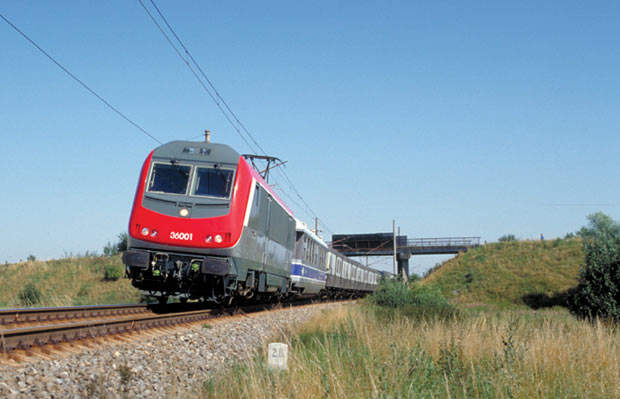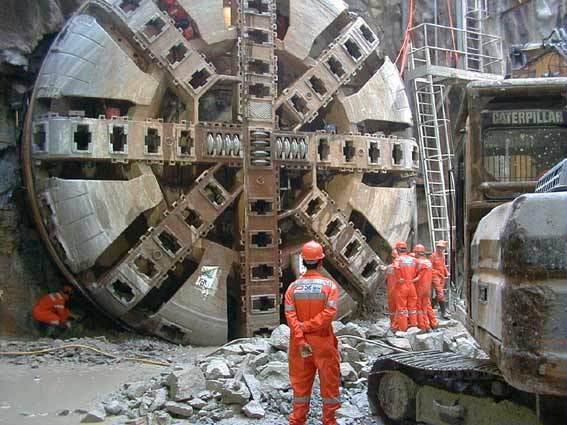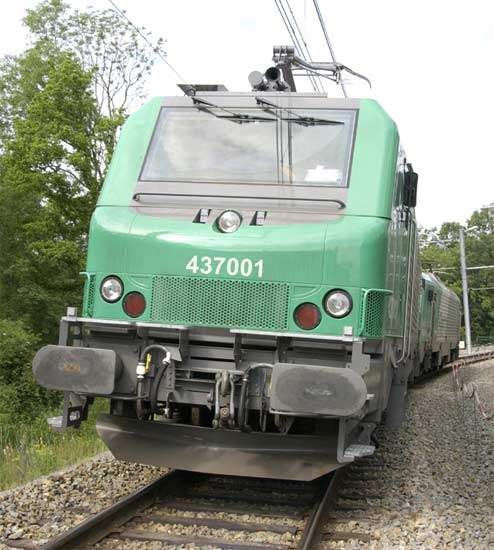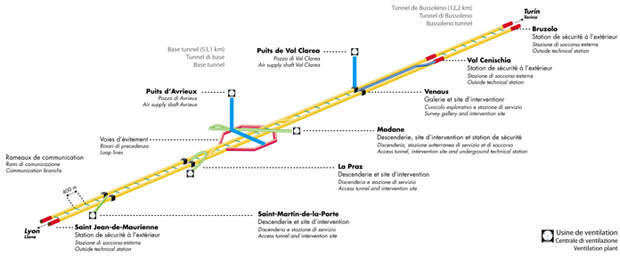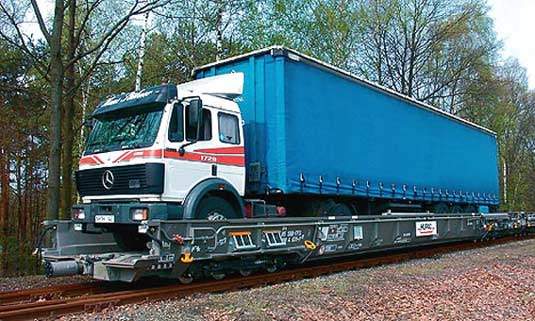France and Italy have embarked on a major project to open up connections to 5,000km of railway lines, and create a route to both boost trade and consolidate the competitiveness of southern European countries including France, Portugal, Spain and Italy.
The movement of freight traffic through the southern Alps is reaching saturation. Some 130 million tonnes of freight are already moved each year – twice the amount carried in 1984 – and this is expected to grow by a further 80% by 2020. Mont Cenis tunnel currently handles around 10 million tonnes of freight per year, and without a relief route will reach its capacity by 2017.
The new tunnel will allow up to 30 million tonnes of freight per year to be transported by rail, and also bring significant advantages to passenger travel through slashed journey times between major European cities.
THE PROJECT
The project has been split into three sections. France is tasked with building a 75km high-speed passenger railway between Lyon and Chambery, plus a freight line between Lyon and la Combe de Savoie and a passenger and freight line between la Combe de Savoie and Saint Jean-de-Maurienne totalling 120km. This stage is being managed by Reseau Ferre de France (RFF).
Italy’s Rete Ferroviaria Italiana (RFI) is building the section between Turin and Bruzolo to create a connection with the southern portal of the base tunnel. This forms part of the common French-Italian section of the route, and is being project managed by Lyon Turin Ferroviaire (LTF). Some 90% of the 72km route will be through the mountains. The longest structure of the two is the 53.1km base tunnel, whilst the second, shorter, Bussoleno Tunnel will be 12.2km long.
€555m has been provided from France and Italy to take it through the design and study stage, with €235m offered by the European Union. The total project cost is expected to be in the region of €6.7bn, with physical work due to start in 2008–10, for completion by 2018–20.
INFRASTRUCTURE
The base tunnel through the Alps is to be bored at an altitude of 570–750m above sea level, with a maximum gradient of 12%, a much easier climb for trains than the 30% through the current Mont Cenis tunnel.
Boring will take place from 17 points and it will take a total of five-and-a-half years to complete construction, with up to another three years to equip the tunnel with ventilation and safety measures, and carry out testing.
The entire route from Lyon to Turin will be designed for operational speeds of up to 250km/h, but in contrast to many recent railway projects, the infrastructure will be shared by both passenger and freight trains.
Standard gauge 1,435mm track will be used throughout the route to allow continuity with the French and Italian railway systems. Noise levels will be reduced by the use of silent materials in construction.
ROLLING STOCK
The majority of the rolling stock passing along the route will be drawn from the current main passenger and freight fleets. However, tests have been carried out with the French equivalent of Germany’s ‘Rolling Road’ wagons, which allow lorry trailers to be driven onto trains for onward efficient movement, thus reducing long-distance road traffic.
The use of such a ‘railway motorway’ will allow a further 10 million tonnes of freight to be moved through the tunnel every year, bringing the total potential tonnage to 40 million tonnes.
SIGNALLING AND COMMUNICATIONS
Signalling is likely to feature the latest high-specification system, either ERTMS Level 2 or ETCS, which is now coming on stream across mainland Europe. The main features, however, will be the safe passage of trains through the 53.1km base tunnel. This will have connections between the two separate bores every 400m to allow passengers to exit should an accident happen at any location.
THE FUTURE
The new base tunnel route between Lyon and Turin is being designed to handle the high volumes of freight traffic, together with its expected increase over the coming decade. In addition, it will drastically shorten journey times between major European cities.
The annual operating costs of the tunnel route have been estimated at €34m, but the heavy freight traffic will bring significant environmental benefits in terms of noise and pollution.
Predictions show that without the new route, the current railway will become saturated by 2015 but will still only carrying 13 million tonnes of freight.

